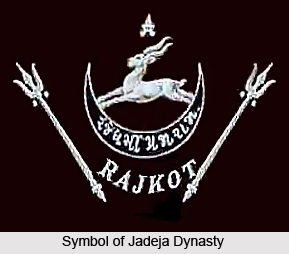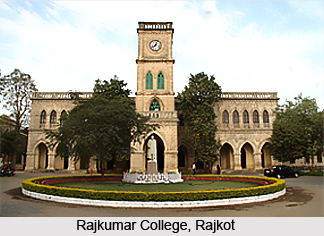 History of Rajkot District is interwoven with the regime of rulers belonging to several dynasties and a gradual transition period which witnessed changes in the economic, cultural and industrial scenario. During the Indian independence movement, Rajkot, which is Gujarat`s fourth largest city, had played an active role. Various historical anecdotes mark the history of Rajkot, which was known to be the former capital of the region of Saurashtra. Rajkot is situated on the banks of Aji River, in the western portion of India.
History of Rajkot District is interwoven with the regime of rulers belonging to several dynasties and a gradual transition period which witnessed changes in the economic, cultural and industrial scenario. During the Indian independence movement, Rajkot, which is Gujarat`s fourth largest city, had played an active role. Various historical anecdotes mark the history of Rajkot, which was known to be the former capital of the region of Saurashtra. Rajkot is situated on the banks of Aji River, in the western portion of India.
Early History of Rajkot District
Thakore Sahib Vibhoji Ajoji Jadeja, the grandson of Jam Shri Satarsal (Sataji) Vibhaji Jadeja of Nawanagar, belonging to Jadeja clan is said to have founded Rajkot during 1620. Prior to Jadeja rule, Mohammad Ghaznavi of Ghaznavid Empire and Mahmud Begada of Muzaffarid Dynasty were the earliest rulers of Rajkot. During 1590 CE, Vibhoji Jadeja was defeated by the Mughals and was taken prisoner, before being ordered to be placed under the leadership of Jodhaji Soda, his maternal uncle. Ardoi, Kalipat, Rib and Ribda were offered to Jadeja after he had cooperated with Shah Jahan in a war against Vaghelas from Sardhar. These areas were transformed into a principality by this ruler and he was succeeded by his son, who was awarded large tracts of land in return for his imperial services. Raju Sandhi was a co-founder of Rajkot, so it also said that this place was also named in his honour.

History of Rajkot during Nawabi Rule
In the year 1720, a deputy of the Nawab of Junagadh named Masum Khan conquered Rajkot and renamed it as `Masumabad`. He had also erected a gigantic fortress during 1722, to safeguard Rajkot from the conquests of other kings. Masumabad was guarded by Eight Gates, which were embedded with iron spikes for better defense. Ruins of fort walls can still be noticed in Ramnath para region. In 1892, Sir Robert Bell Booth, an engineer of the British Agency modified Raiya Naka Gate and Bedi Gate. Masum Khan reigned for a period of 12 years, till he was defeated and captured by Thakore Sahib Ranmalji Mehramanji in 1732.
History of Rajkot during Jadeja Rule
The name Rajkot was given to the region soon after Thakore Sahib Ranmalji Mehramanji had conquered Masumabad during 1732. Darbargadh Palace was created by Bavajiraj Jadeja and this was said to be very first palace of Rajkot. Lakhoji I succeeded Ranmalji in 1746. During 1794, his eldest son, who was about to ascend the throne died and therefore he continued ruling Rajkot. However, his grandson Ranmalji II was discontented with such an action and deported his grandfather to Nawanagar. The royal family soon acknowledged British protection in the year 1818 and the area of Rajkot gradually developed into a beautiful modern town under the British Political Agent. It emerged into a major centre of education, and numerous reputed educational institutes were constructed here.
Modern History of Rajkot District
Lang Library, The Rajkumar College, Masonic Hall, Connaught Hall and Watson Museum are some of the magnificent colonial structures which had been constructed in Rajkot during the British rule. Thakore Saheb Dharmendrasinhji Lakhajiraj came to the throne during 1930. Unlike his father, he imposed heavy taxes on his subjects, which resulted in a high rate of inflation in his kingdom. He was a spendthrift who spent half of the amount received as state funds to finance his own interests. Soon, political parties like Congress and others initiated rebellions and protests against his deceitful ways. In 1939, Mahatma Gandhi performed fasting to persuade the people to create people`s council, for the purpose of liberation of the regional inhabitants of Rajkot. The subjects were immensely relieved when Sahib Dharmendrasinhji met his death in the year 1940, when he had gone for hunting lions in Sasan Gir. Rajkot served as the capital of the state of Saurashtra till 31st October, 1956, right from 15th April, 1948, before it was joined with Bombay State during 1st November, 1956. On 1st May, 1960 Rajkot was declared a part of Gujarat from Bombay State. Manoharsinhji Pradyumansinhji, the son of Thakore Saheb Pradyumansinhji became the next ruler of Rajkot after his father died in 1973. He was the Member of the Gujarat Legislative Assembly for sometime and also served as the state Minister for Health and Finance.



















